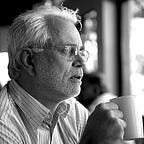Peter Independence Kurtz was an eccentric Virginia Gadfly
Peter Independence Kurtz was a brilliant oddball who was born near Staunton, Virginia July 4, 1814 (hence his middle name) and died there Oct. 8, 1874.
Prior to the Civil War Peter earned a living posting bills for various Staunton businesses and delivering newspapers. During the war, Kurtz printed his own money, called “shinplasters,” which stated “Payable ten cents on demand in bill-posting and bell-ringing and in blackberries in July or August, 1862, provided that the crop does not fail.” Union soldiers occupying Staunton just after the war snapped up these shinplasters as souvenirs.
Kurtz, however, was aggravated by the arrogance of these Union occupiers, who harassed citizens and bragged that the South was so completely whipped that they could carry a flag safely all the way from any northern city to Vicksburg through Staunton.
Kurtz in turn bragged that he could carry a flag on foot from Staunton to Winchester. So J.M. Hardy, who owned the Staunton wagon works, provided Kurtz with a flag, and he then marched all the way up the Valley Pike (Route 11) to Winchester — a distance of about 100 miles — as a simple show of defiance to a braggart Yankee.
In addition to a money-printer, Kurtz was an incurable practical joker. In 1869, posters were spotted around Staunton that stated that a New Orleans Colonel named B. H. Cedivay was delivering a lecture free of charge on Cuban independence. That night, many locals showed up to a dark and empty hall, except for that “unreconstructed rebel, dyed-in-the-wool democrat, and incorrigible wag, Peter Independence Kurtz,” standing in the doorway, “grinning horribly a ghastly smile.” He then reminded the disappointed attendees that it was April 1, and that Col Cedivay was a myth.
The hoodwinked patrons returned home talking to themselves, and Kurtz retired to a local saloon for the remainder of the evening.
Most remarkably, Kurtz was also a prolific self-publisher of oddball newsletters under such names as “Comic Clinker” (1869), “Frazzlar” (1870) and “Catamount and Funny Boy” (1873), among others. In fact, they became so popular at the time that the Staunton Leader newspaper frequently announced when the next Kurtz publication was hitting the streets. The Oct. 18, 1870 Leader reported that “Peter Independence Kurtz will be around today with his new paper, ‘The Valley Happy Man.’ It is rich, rare and racy. Secure a copy.”
The magazines provided a much-needed source of income for the unconventional little man who never took “no” for an answer.
The difficulties of setting type and printing, coupled with the scarcity of paper, make these publications all the more remarkable. Accordingly, of all of these incredibly rare papers, the only survivor seems to be a single copy of an 1863 Kurtz-produced one-shot titled “The Funny Boy — Extra,” published in 1863 (pictured).
“His memory was remarkably tenacious to the facts and dates, and his mind an encyclopedia of unwritten local events and history,” wrote the Valley Virginian newspaper of this remarkably eccentric talent on the day of his death in 1874. “He met life as a philosopher — never complaining because of poverty or misfortune — and to all appearances was as happy and contented in his sometimes scanty and unprepossessing apparel, as those who passed him by, arrayed in ‘purple and fine linen.’”
“The clods of the Valley rest upon no more harmless and honest man than Peter Independence Kurtz. Peace to his ashes.”
Read more at www.dalebrumfield.net.
